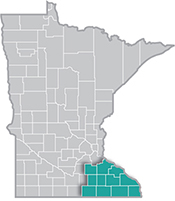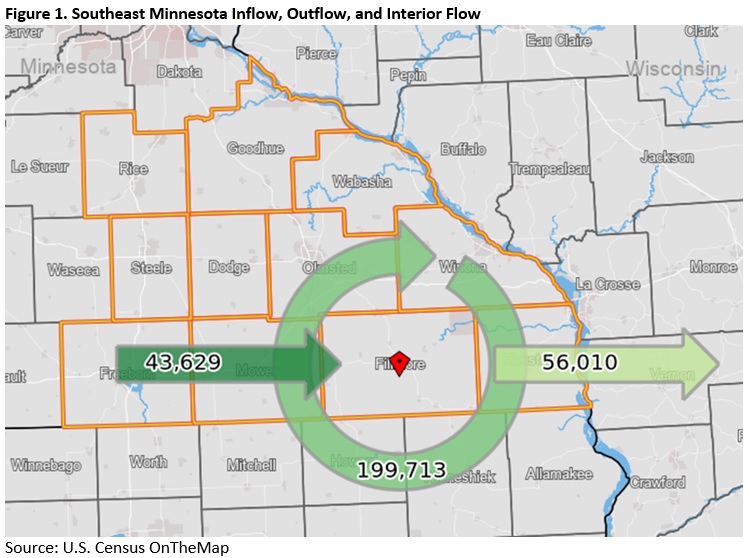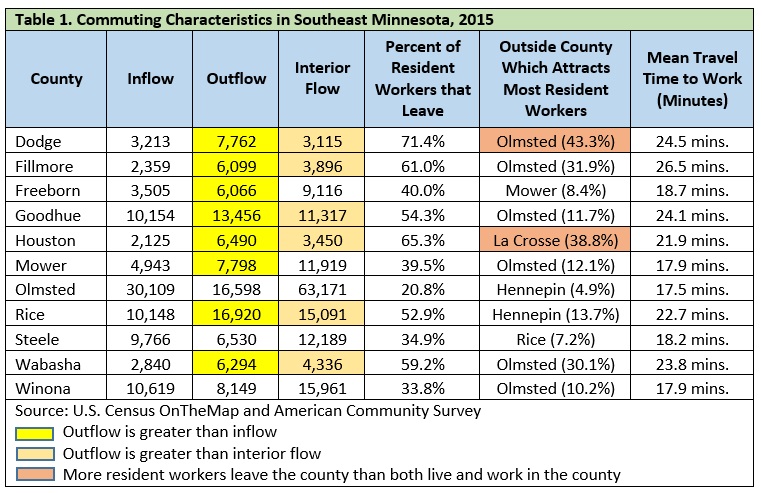 Southeast Minnesota is a health care and agricultural powerhouse. The region is home to the renowned Mayo Clinic and some of the world's most recognized food companies and brands.
Southeast Minnesota is a health care and agricultural powerhouse. The region is home to the renowned Mayo Clinic and some of the world's most recognized food companies and brands.
Advanced manufacturing is especially strong here, with machinery, chemicals, and electronics among the top products.
Want the freshest data delivered by email? Subscribe to our regional newsletters.
4/4/2019 3:00:00 PM
It’s no surprise that many individuals travel for work. However, this may become problematic as the region experiences a greater exodus of workers compared to the number of workers from outside the region that it attracts. According to U.S. Census OnTheMap data, the Southeast region sees just over 56,000 workers leaving the region for work (about 22 percent of the region’s workers) while only bringing in 43,629 workers from outside the region (Figure 1). While almost 200,000 residents live and work in the region, this loss of workers could be detrimental as the region continues to struggle with a tight labor market and a projected labor force loss from 2020 to 2030. (The region is projected to lose about 6,250 participants.)

Six of the 11 counties see the highest amount of workers commuting to Olmsted County, so their workers are at least staying in the region, while both Olmsted and Rice counties lose the largest percentage of workers to Hennepin County in the metro. Two counties lose more workers to one individual outside county compared to the total who both live and work in the county: Dodge County has more workers traveling to Olmsted County, and Houston County loses more workers to La Crosse County, Wisconsin (Table 1).

Commuting data can be very helpful in workforce and economic development discussions and pose questions that add to the complexity of dealing with the tight labor market in the region:
Contact Mark Schultz.